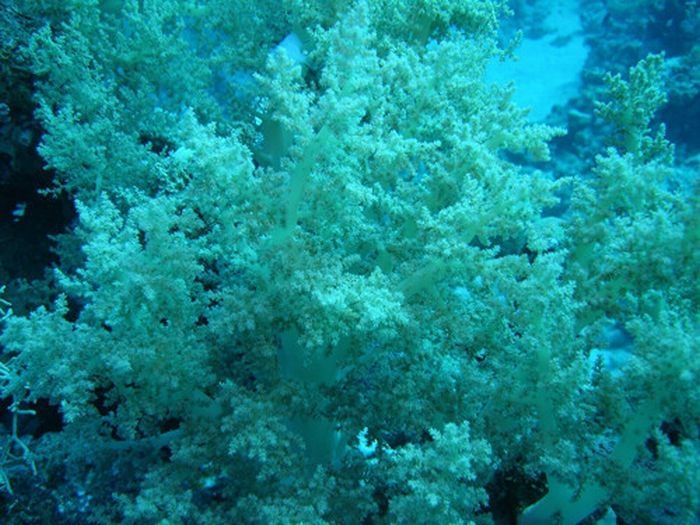|
|
Coral Organisms
|
Formation of the calcareous exoskeleton involves deposition of the mineral aragonite by the polyps from calcium and carbonate ions they acquire from seawater. The rate of deposition, while varying greatly across species and environmental conditions, can be as much as 10 g / m² of polyp / day (0.3 ounce / sq yd / day). This is light dependent, with night-time production 90% lower than that during the middle of the day.
Nematocysts are stinging cells at the tips of the calices that carry poison which they rapidly release in response to contact with another organism. The tentacles also bear a contractile band of epithelium called the pharynx. Jellyfish and sea anemones also carry nematocysts.
The polyps interconnect by a complex and well developed system of gastrovascular canals allowing significant sharing of nutrients and symbiotes. In soft corals these range in size from 50–500 micrometres (0.0020–0.020 in) in diameter and allow transport of both metabolites and cellular components.
Many corals as well as other cnidarian groups such as sea anemones (e.g. Aiptasia), form a symbiotic relationship with a class of algae, zooxanthellae, of the genus Symbiodinium. Aiptasia, while considered a pest among coral reef aquarium hobbyists, serves as a valuable model organism in the study of cnidarian-algal symbiosis. Typically a polyp harbors one species of algae. Via photosynthesis, these provide energy for the coral, and aid in calcification. The algae benefit from a safe environment, and consume the carbon dioxide and nitrogenous waste produced by the polyp. Due to the strain the algae can put on the polyp, stress on the coral often drives the coral to eject the algae. Mass ejections are known as coral bleaching, because the algae contribute to coral's brown coloration; other colors, however, are due to host coral pigments, such as GFPs (green fluorescent protein). Ejection increases the polyp's chances of surviving short-term stress—they can regain algae at a later time. If the stressful conditions persist, the polyp eventually dies.
|
|









